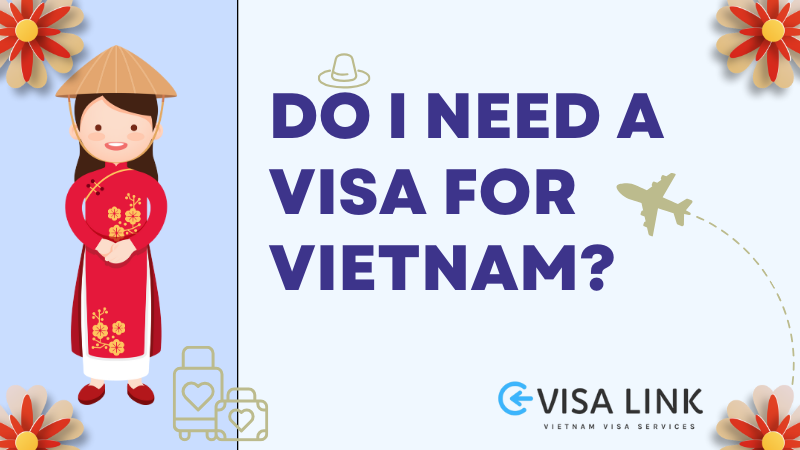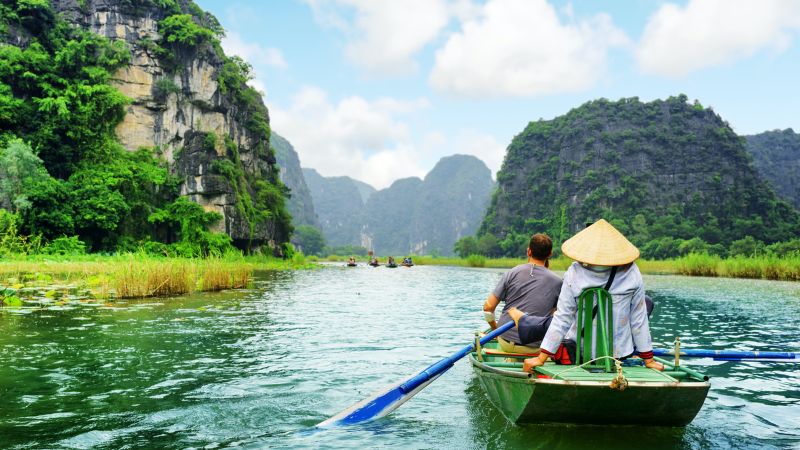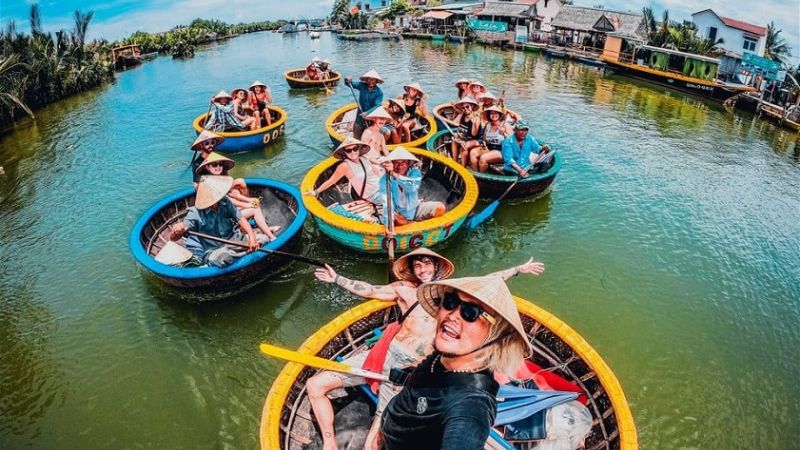Do I Need a Visa for Vietnam on Short Visits? While many travelers may assume they need a visa for every international trip, this isn’t always the case for Vietnam. If you’re from one of the 25 countries granted visa exemptions, you might be eligible for a short-term stay without any visa paperwork. However, the maximum allowed duration and specific visa-free conditions can vary depending on your nationality. It’s crucial to check your country’s eligibility and terms to ensure a smooth journey.
Countries with visa exemptions for Vietnam
By August 2022, Vietnam had visa-free arrangements for 25 countries:
- 12 countries have bilateral visa-free agreements.
- 13 additional countries, including 11 from Europe (a notable increase from the earlier 5), also enjoy bilateral visa exemptions.
For each country’s allowed duration of stay and specific conditions, refer to the table below.
| No. | Country | Duration of Stay | Purpose of Entry |
| 1 | Chile | 90 days | Non-income related activities |
| 2 | Panama | 90 days | Non-income related activities |
| 3 | Cambodia | 30 days | Not specified |
| 4 | Indonesia | 30 days | Not specified |
| 5 | Kyrgyzstan | 30 days | Not specified |
| 6 | Laos | 30 days | Not specified |
| 7 | Malaysia | 30 days | Tourism; press; official duties; family visits; business negotiations; investment; sports; conferences, seminars. |
| 8 | Singapore | 30 days | Non-income related activities |
| 9 | Thailand | 30 days | Not specified |
| 10 | Philippines | 21 days | Not specified |
| 11 | Brunei | 14 days | Not specified |
| 12 | Myanmar | 14 days | Sightseeing |
| 13 | Belarus | 45 days | Not specified |
| 14 | South Korea | 45 days | Not specified |
| 15 | Japan | 45 days | Not specified |
| 16 | Germany | 45 days | Not specified |
| 17 | Denmark | 45 days | Not specified |
| 18 | Norway | 45 days | Not specified |
| 19 | Russia | 45 days | Not specified |
| 20 | France | 45 days | Not specified |
| 21 | Finland | 45 days | Not specified |
| 22 | Spain | 45 days | Not specified |
| 23 | Sweden | 45 days | Not specified |
| 24 | Italy | 45 days | Not specified |
| 25 | UK (excluding British Nationals Overseas – BNO) | 45 days | Not specified |
How many types of Vietnam visas are available for US citizens?
Your Easiest Path to a Vietnam Visa: Apply with Us or Go Solo After Exploring Common Queries for US Citizens! Based on your needs, here are the current Vietnam visas’ types for US citizens.
Regarding the way of application: E-visa
Regarding the purpose of visit:
- Tourist visa
- Business visa
- Relative visit visa
Regarding the length of stay in Vietnam:
- 30 days single entry
- 30 days multiple entry
- 90 days single entry
- 90 days multiple entries
How much does a Vietnam visa cost?
Visa fees differ based on the application method. Online applicants have different fees compared to those applying in person at embassies or consulates. For a standard 30-day E-Visa, the fee is US$25. Contact your local embassy or consulate for fees for in-person or postal applications.
For Visa on Arrival, start by paying a fee to a visa agency for a “pre-approval letter.” For a single-entry visa, this costs around US$17 for 30 days and US$25 for 90 days. For a multiple-entry visa, the fee is around US$20 for 30 days and US$65 for 90 days.
You’ll need to pay a second fee, known as a “Stamping Fee”, when you reach Vietnam, using foreign currency. This costs US$25 for a single-entry visa and US$50 for a multiple-entry visa. Different fees apply for visitors from most of Africa and the Middle East and some countries in Asia.
How long are Vietnam visas valid?
- You can select either a single or multiple entry visa.
- Visa extensions within Vietnam are available for a fee.
- For business trip visas, contact your local Vietnamese embassy or consulate. You can find a list of these offices on the Ministry for Foreign Affairs website.
What are requirements to get Vietnam eVisa for US citizens?
US citizens must ensure the following to obtain an eVisa for Vietnam:
- Your US passport must be valid for at least 6 months and have 2 blank pages when you enter Vietnam.
- You have a soft copy of your full passport personal detail page (in jpeg format)
- You have a soft copy of your portrait (in jpeg format, meeting the Vietnam evisa photo requirements).
- You have an active email to receive OTP
- You have a credit card/debit card to make payment.
How many options there are for getting your Vietnam eVisa?
There are 3 options for obtaining your Vietnam eVisa:
- Online Application: You can apply for your Vietnam eVisa online from the official website or a reputable eVisa service provider worldwide.
- Embassy or Consulate: You can visit a Vietnam embassy or consulate in your home country to apply for an eVisa.
- Authorized Agency: Some authorized agencies can assist you in obtaining a Vietnam eVisa, but it’s essential to ensure their reliability.
The online application method is the most convenient and widely used option for travelers.
What are Vietnam eVisa cost and processing time for US citizens?
If you apply for the eVisa yourself, your fee will be as follows:
- Single entry visa: US $25
- Multiple entry visa: US $50
The eVisa processing time will be as follows:
| Processing time | Percentage of applicants |
| <3 working days | 5% |
| 3 working days | 75% |
| 4-5 working days | 15% |
| >5 working days | 5% |
Can I enter Vietnam with my eVisa at any point of entry?
Regrettably, it is not possible. You must enter the exact port of entry on your Vietnam evisa application. Failure to meet these requirements may result in entry denial.
You can check the Vietnam eVisa ports below:
| Airports | Landports | Seaports |
| Noi Bai Airport (Hanoi) | Tay Trang Border Gate (Dien Bien) | Hon Gai Seaport (Quang Ninh) |
| Tan Son Nhat Airport (Ho Chi Minh City) | Mong Cai Border Gate (Quang Ninh) | Cam Pha Seaport (Quang Ninh) |
| Cam Ranh Airport (Khanh Hoa) | Huu Nghi Border Gate (Lang Son) | Hai Phong Seaport (Hai Phong) |
| Da Nang Airport (Da Nang) | Lao Cai Border Gate (Lao Cai) | Vung Ang Seaport (Ha Tinh) |
| Cat Bi Airport (Hai Phong) | Na Meo Border Gate (Thanh Hoa) | Chan May Seaport (Thua Thien Hue) |
| Can Tho Airport (Can Tho) | Nam Can Border Gate (Nghe An) | Da Nang Seaport (Da Nang) |
| Phu Quoc Airport (Kien Giang) | Cau Treo Border Gate (Ha Tinh) | Nha Trang Seaport (Khanh Hoa) |
| Phu Bai Airport (Thua Thien Hue) | Cha Lo Border Gate (Quang Binh) | Quy Nhon Seaport (Binh Dinh) |
| Van Don Airport (Quang Ninh) | La Lay Border Gate (Quang Tri) | Dung Quat Seaport (Quang Ngai) |
| Tho Xuan Airport (Thanh Hoa) | Lao Bao Border Gate (Quang Tri) | Vung Tau Seaport (Ba Ria-Vung Tau) |
| Dong Hoi Airport (Quang Binh) | Bo Y Border Gate (Kon Tum) | Ho Chi Minh City Seaport (Ho Chi Minh City) |
| Phu Cat Airport (Binh Dinh) | Moc Bai Border Gate (Tay Ninh) | Duong Dong Seaport (Kien Giang) |
| Lien Khuong Airport (Lam Dong) | Xa Mat Border Gate (Tay Ninh) | |
| Tinh Bien Border Gate (An Giang) | ||
| Vinh Xuong Land and Waterway Border Gate (An Giang) | ||
| Ha Tien Border Gate (Kien Giang) |
Is it possible to extend my stay in Vietnam beyond my eVisa duration?
Yes, it’s possible to extend your stay in Vietnam beyond your eVisa’s duration.
You have two options:
- A visa extension, which adds more time to your existing visa
- A visa renewal, which provides a new visa stamp and sticker.
Requirements include a passport valid for at least six months with two blank pages. You should initiate extensions and renewals at least 7 business days before your visa expires. Travelers outside Vietnam can also apply for a new eVisa, which allows for flexibility in your stay.
Do I have to enter Vietnam on the exact date specified in my eVisa letter?
No, the exact date specified in your eVisa letter does not require you to enter Vietnam.
Your eVisa provides a “valid from” date, which means you can enter Vietnam on or after that date, but not before. It also has an “until” date, indicating the last day you can enter the country. It’s important to adhere to this timeframe to ensure your entry goes smoothly.
Conclusion
To put it simply, US citizens must have a valid visa to go to Vietnam. The eVisa option allows for stays of up to 90 days and multiple entries. Thorough planning is essential for a successful application. Visa options include tourist, business, and relative visit visas, with varying fees.
Extensions and renewals are available for a fee. Entry must align with the specified port of entry. For those needing an extension, options include visa extensions or renewals. Adhere to eVisa validity dates for a seamless entry process.




